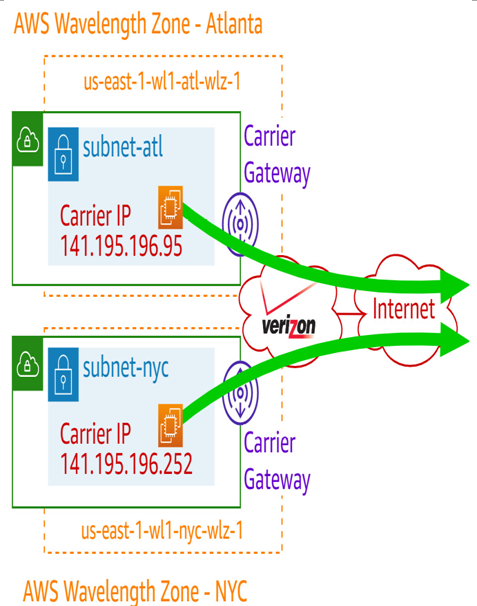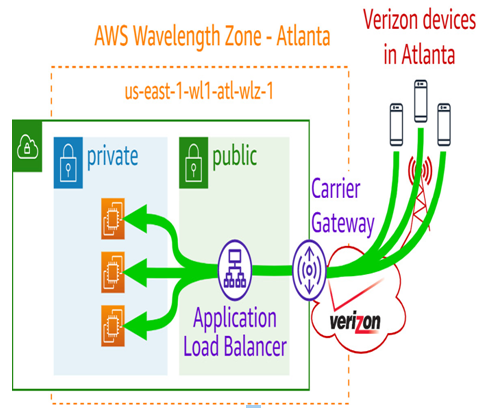Both types of devices on an MNO’s network can connect to resources in an AWS Wavelength Zone. However, the latency is dramatically different. Recall from Chapter 3 the architectural differences between 5G and 4G/LTE topologies.
A 5G connection can leave an MNO’s network via one of many distributed points known as the User Plane Function (UPF). MNOs can use 5G network slicing to ensure latencies as low as a single millisecond from the device to the carrier gateway.
By comparison, a 4G/LTE device must backhaul to a central point of egress from the MNO’s network – the Packet Gateway (PGW). Further, the MNO’s ability to ensure a high quality of service (QoS) is lessened in the absence of network slicing. It is not uncommon for a device that can reach a carrier gateway in 1 ms over 5G requires 30 ms when switched to 4G/LTE mode.
If a compute resource on a public subnet within an AWS Wavelength Zone needs to initiate a connection out to the internet, it will do so using the carrier gateway and get to the internet via whatever path that MNO uses for internet access.
Internet access
A container or instance in an AWS Wavelength Zone can use a carrier gateway to connect to servers on the internet via the MNO’s network:

Figure 7.9 – Egress to the internet via carrier gateways
When doing this, outbound TCP connections from AWS to the internet function normally. However, UDP connections are blocked over this path.
Application Load Balancer
When an Elastic Load Balancer (ELB) is set up in a Wavelength Zone, it is done in much the same way as it is in any standard availability zone, with three differences. First, unlike Application Load Balancers (ALBs) in a standard region, only one subnet must be selected. Second, only the Layer 7 ALB variant is available. Layer 4 or Network Load Balancers (NLBs) cannot be deployed to a Wavelength Zone. Lastly, the listener is going to be on the carrier’s network and use a carrier IP:

Figure 7.10 – ALB in an AWS Wavelength Zone
Special note on the geographical availability of ALBs
At the time of writing, ALBs can only be deployed to the 19 AWS Wavelength Zones in the US. If you attempt to deploy an ALB to an unsupported zone, you will receive an error. Customers in other geographies must use AWS Route53, third-party appliances from the AWS Marketplace, self-configured HAProxy, or a similar alternative.